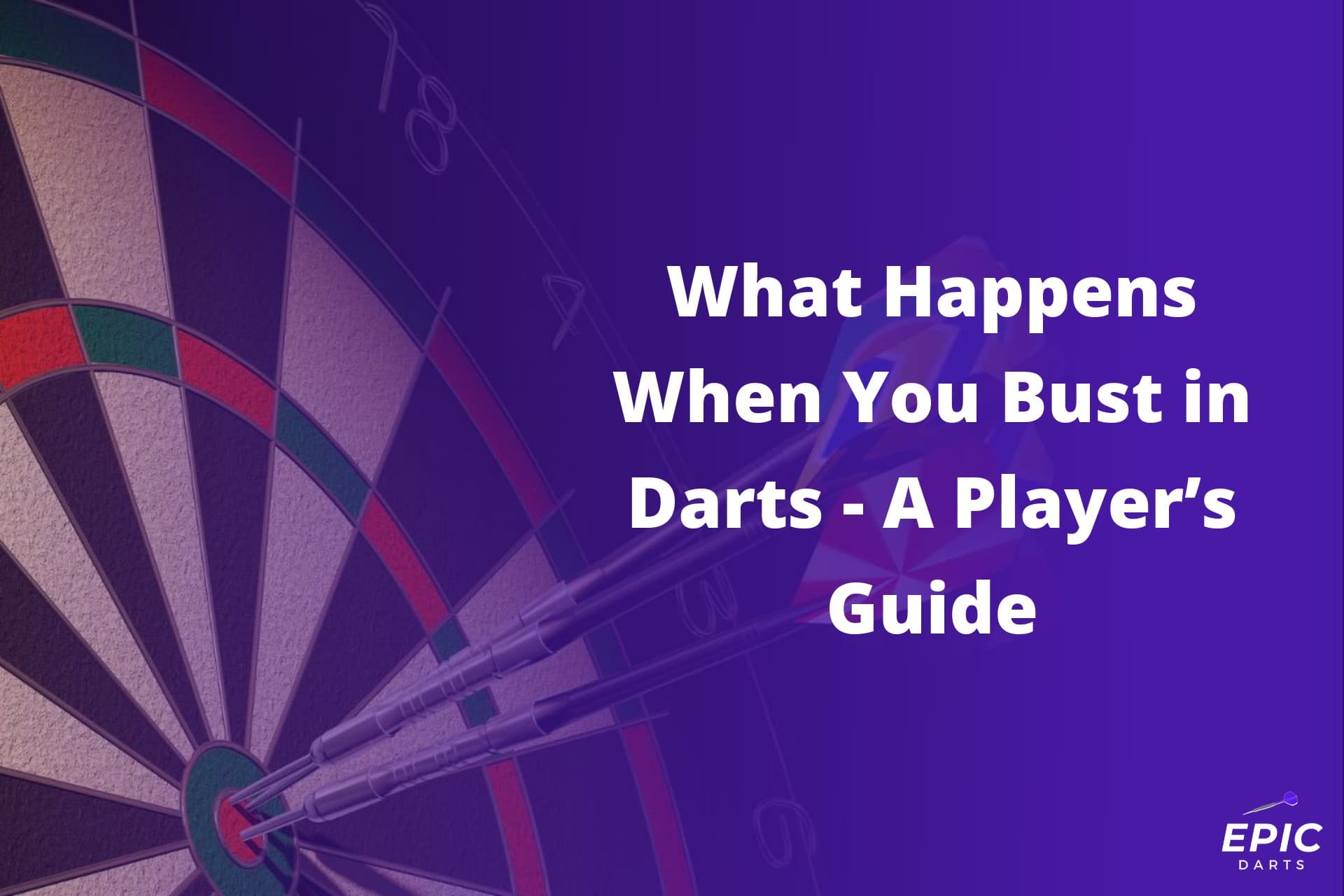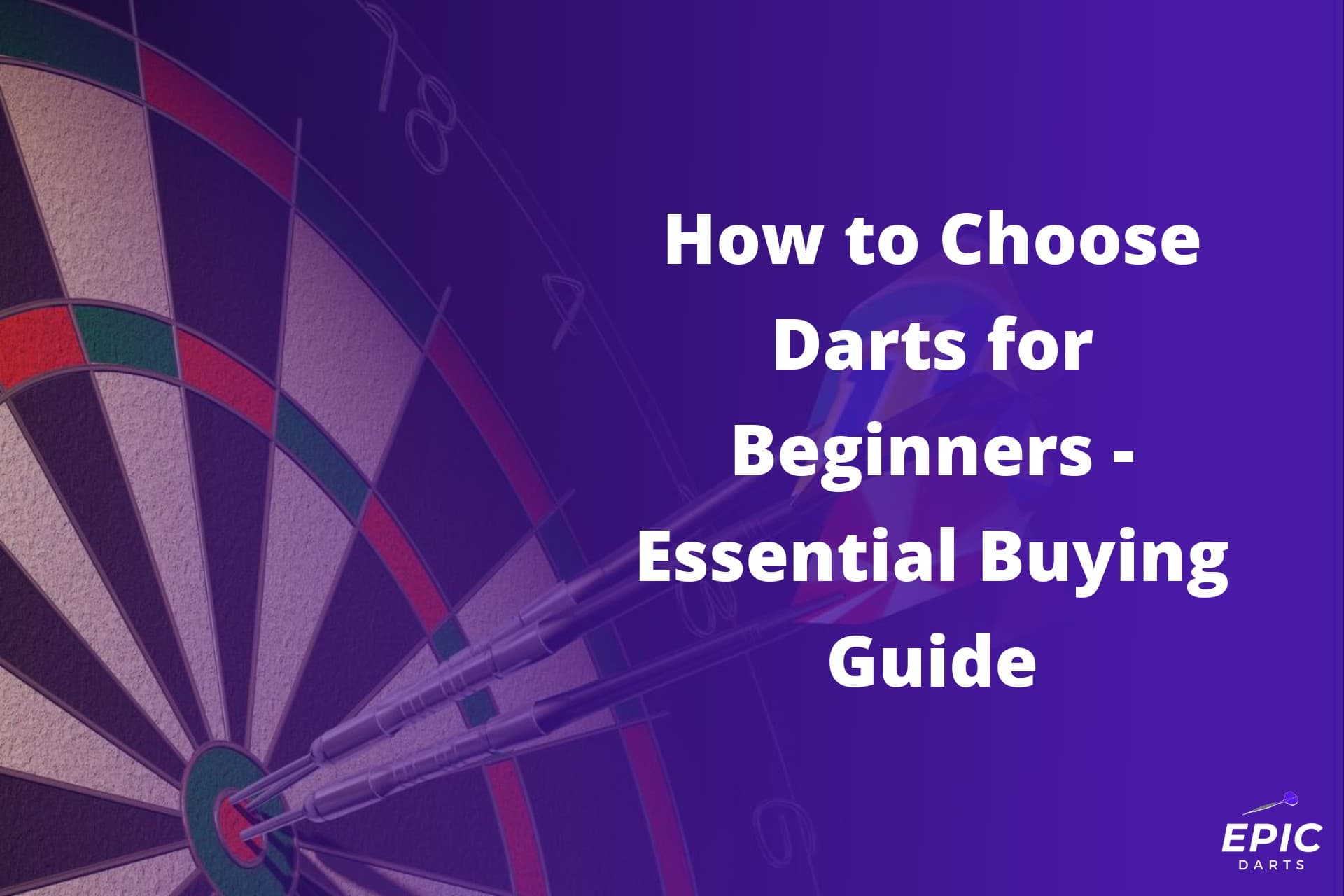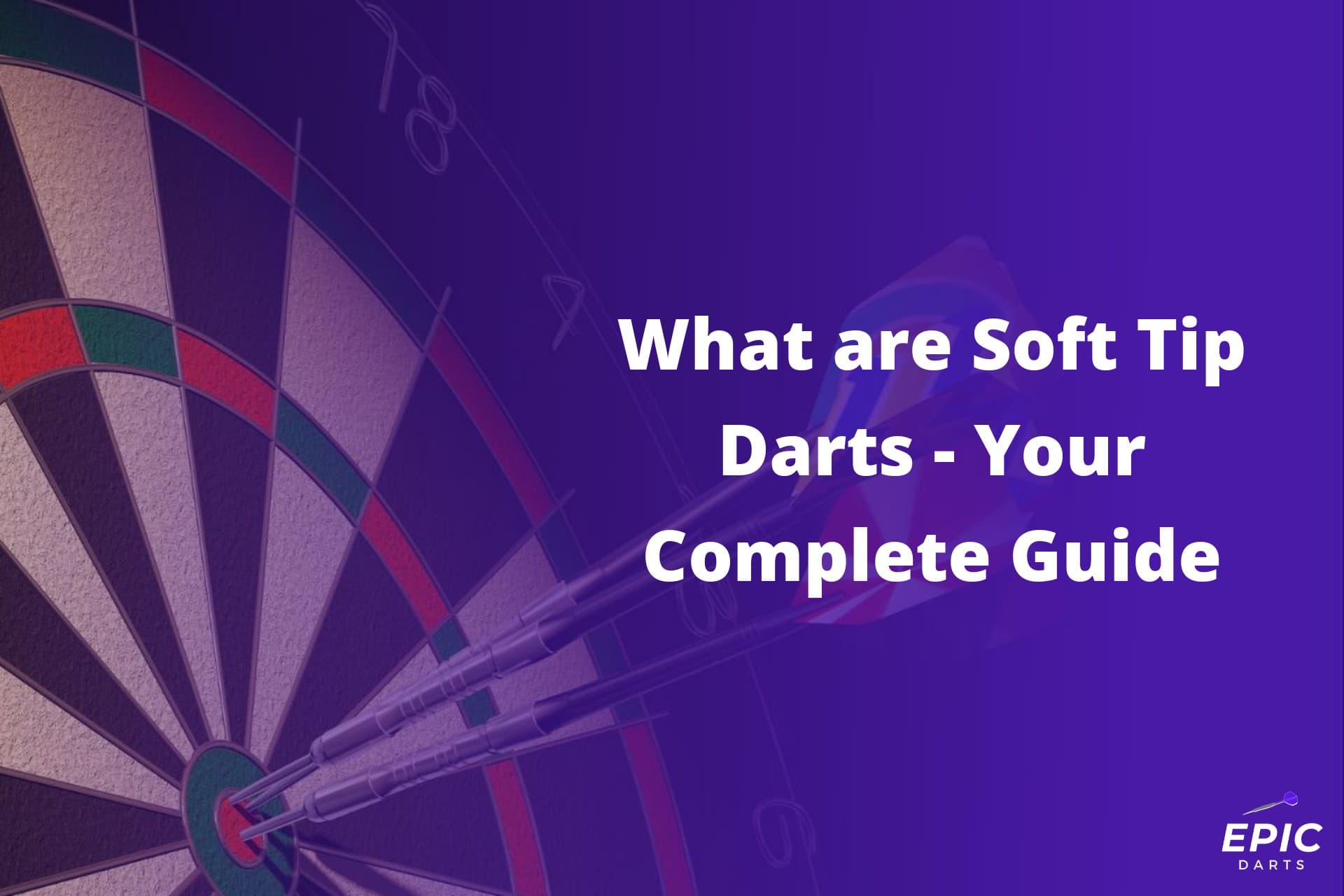So you may have heard it while watching a match or even just casually playing with friends, and wondered, “What exactly happens when you ‘bust’ in darts?”
“Busting” in darts happens when a player scores more than the remaining total points they need to reach zero. For example, if a player has 5 points left, they must score exactly 5 to win. If they score any more than that, they’ve “busted”.
When a bust occurs, the player’s score is returned to what it was at the start of their turn, and play passes to the next player.
As a player, it’s important to keep track of your remaining points and strategize how to double them before you run out. Make sure to use the double sections on the dartboard wisely, as they can significantly increase your score. Remember to plan your shots carefully, considering the points you have left and the doubles that are still available.
Consequences of Busting in Darts
Busting in darts can greatly impact a player’s game, as it results in the loss of remaining points and doubles the total score. Not only does the player lose all points from the current game round, but they also face a penalty where they cannot score any points until their next turn. This double penalty is known as a bust. This setback can be frustrating and demoralizing for any player in a game, affecting both your remaining points and confidence. It’s disheartening to experience a bust, as it can have a negative impact on your overall performance.
When a player busts in darts, it essentially means that they have exceeded the maximum score required to finish the game, resulting in a double loss. This mistake not only doubles the risk of busting for the player in the game, but also wipes out any progress made during the current round, putting them at a disadvantage for future rounds. Here are some key consequences of busting in darts:
- Loss of Points: In the game, if a player busts, they will lose double the points they have accumulated during the current round. Whether it’s a few points or a substantial lead, it’s disheartening to see your efforts as a player in the game go to waste. It’s even more frustrating when you double down on your strategy, only to end up bust.
- Player Inability to Score: After double busting in the game, the player is unable to score any points until their next turn. This gives your opponent, the other player in the game, an opportunity to capitalize on your mistake and potentially double their advantage over you. If you make a wrong move, you may bust and lose the game.
- Psychological Impact: Playing a game can double the pressure on a player, and busting can take a toll on your mental state. Being a player in a game can be demoralizing and affect your confidence levels, leading to poor decision-making and decreased performance. It’s important to avoid double the pressure and the risk of busting during gameplay.
- Momentum Shift: Busting not only affects the player personally but also has a double impact on the overall momentum of the game. It can swing the game advantage towards your opponent, who now has an opportunity to bust control and dominate the match.
- Strategic Disruption: Busting in the game disrupts any strategic plans or tactics that you may have had for scoring maximum points or setting up favorable positions on the dartboard. Starting a new game from scratch after busting in the previous one requires reevaluating your game approach and adjusting accordingly.
Understanding the Rules of Darts
To fully enjoy playing darts and avoid a bust, it’s essential to understand the rules and how they influence the game. Let’s dive right into it:
- Familiarize yourself with the basic rules of darts: Knowing the fundamental rules is crucial for a successful game. Don’t let your game bust! Don’t let your game bust! Don’t let your game bust! Understanding how to score points and reach the target score is crucial in avoiding a bust.
- Learn about different dartboard sections: The dartboard is divided into various sections, each with its own point values. Whether you’re a beginner or an experienced player, understanding the different sections of the dartboard is crucial to improving your game and avoiding a bust. Whether you’re a beginner or an experienced player, understanding the different sections of the dartboard is crucial to improving your game and avoiding a bust. Whether you’re a beginner or an experienced player, understanding the different sections of the dartboard is crucial to improving your game and avoiding a bust. These sections include singles, doubles, and triples. For instance:
- Singles: Hitting any regular section on the board scores you the indicated number, without busting.
- Doubles: Hitting one of the narrow outer rings doubles your score for that section, which can really bust up your opponent’s chances of winning.
- Triples: Hitting one of the narrow inner rings will bust your score for that section.
- Understand how hitting specific areas affects your overall score: Depending on where you hit on the dartboard, your score will vary. It’s important to aim carefully and avoid a bust. It’s important to aim carefully and avoid a bust. It’s important to aim carefully and avoid a bust. Here are some examples:
- Bullseye: Hitting the center of the board grants you 50 points for an inner bullseye and 25 points for an outer bullseye. If you hit the bullseye, you’ll bust your score! If you hit the bullseye, you’ll bust your score! If you hit the bullseye, you’ll bust your score!
- Hitting a number in its outer ring earns you double its value, while hitting it in its inner ring gives you triple its value. This can result in a bust.
By grasping these rules, you’ll be well-equipped to play darts confidently and enjoyably without the fear of busting. So grab your darts and start practicing!
Game Play and Scoring in Darts
In a standard game of darts, players take turns throwing three darts each per round. However, if a player fails to hit the target, they bust and lose their turn. However, if a player fails to hit the target, they bust and lose their turn. However, if a player fails to hit the target, they bust and lose their turn. The objective of a dart game is to reduce the starting score (usually 501 or 301) to zero by subtracting points based on where the darts land on the board, without going bust.
Players aim for high-scoring areas while avoiding hitting numbers that would cause them to bust. Here’s how the game play and scoring in darts work, including how to avoid a bust.
- Each player starts with a specific number of points, commonly 501 or 301, in order to avoid a bust.
- Players take turns throwing three darts each per round.
- The score is determined by where the dart lands on the dartboard.
- There are different variations of darts games such as cricket darts and doubles darts.
- To reduce their score, players subtract the points they hit from their remaining total.
- The outer ring of the dartboard is worth double points, while the inner ring (known as the “double”) is worth double those double points.
- Some games require players to finish with a double outshot, meaning they must hit a double to win once they reach a certain score.
- If a player exceeds their remaining points after throwing their three darts (known as “busting”), their turn ends and they do not score any points for that round.
By understanding the rules of game play and scoring in darts, players can strategize their shots to achieve lower scores and ultimately win the game. So grab your dartboard, aim carefully, and let’s see who can hit that bullseye!
Strategies to Avoid Busts in Darts
Now that you understand the consequences of busting in darts, as well as the rules and game play, it’s time to explore some strategies that can help you avoid this frustrating outcome. By implementing these techniques, you’ll increase your chances of scoring big and achieving victory.
Firstly, focus on precision rather than power. It’s not about how hard you throw the dart, but rather how accurately you aim. Take your time to line up your shot and concentrate on hitting the target with precision. Secondly, strategize your throws by aiming for high-value areas of the dartboard. Targeting the triple or double sections can significantly boost your score and reduce the risk of busting. Lastly, practice regularly to improve your consistency and accuracy. The more you play, the better understanding you’ll have of your own throwing style and technique.
So go ahead, grab a set of darts and put these strategies into action! With determination and practice, you’ll soon become a skilled player who consistently avoids busts and achieves impressive scores.
FAQs
How do I choose the right type of dart?
Choosing the right type of dart depends on personal preference and playing style. Consider factors such as weight, grip, barrel shape, and balance when selecting darts that feel comfortable in your hand. Experiment with different options until you find a set that suits your throwing technique.
What should I do if my darts keep bouncing off the board?
If your darts consistently bounce off the board without sticking properly, it could be due to several reasons. Check if your darts are too light or have dull points that need sharpening. Make sure you are throwing with enough force but not excessive power that causes them to bounce off.
Are there any specific techniques for improving my aim?
Improving aim in darts requires practice and focus. One effective technique is called “sighting.” This involves lining up your dominant eye with the target and using it as a guide to aim accurately. Maintaining a consistent stance, grip, and release can help improve your aim over time.
How can I prevent my arm from getting tired during long dart sessions?
To prevent fatigue during extended dart sessions, it’s important to warm up before playing. Stretching exercises for your arms and wrists can help loosen up muscles and reduce the risk of strain. Taking short breaks between games or sets can also give your arm a chance to rest and recover.
Can playing darts improve my hand-eye coordination?
Yes, playing darts is an excellent way to enhance hand-eye coordination. The constant focus on aiming at a specific target helps develop precision and accuracy. Over time, you’ll notice improvements not only in your dart game but also in other activities that require hand-eye coordination.





